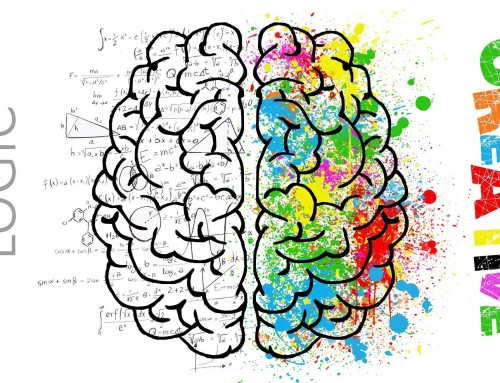Optimizing Color Schemes During the Web Design Process, by Jori Hamilton
Great web design is not just about how beautiful your pages look. A site that only has impressive features and pretty images going for it is not generally going to perform well. Rather, the design needs to serve the intentions of the site — the old adage of form following function applies to websites as much as any other medium.
This means that color in web design can do more than make a page look cool. Those hues, shades, and saturations are capable of doing a lot of heavy lifting to impact visitors. Color has the power to inform, enhance, and serve the various goals that businesses have for their websites — whether it’s a space to make loyal consumers feel welcome, or guiding potential new clients through the customer journey.
We’re going to take a closer look at the importance of optimizing colors in web design. What goals for your site can it help you achieve, while also serving the needs of users? Just how deeply does color affect our ability to improve visitors’ experiences?
For Branding
Whether for an eCommerce platform or a creative portfolio, the website is an important tool in building branding. The visuals of any brand play a key role in communication; when done well, they send an immediate message to consumers about what the company is and what it values. As these visual aspects become a core part of brand identity, consistency of imagery across all channels — down to the colors used — is vital to setting consumer expectations.
That said, simply splashing the brand color scheme across the website is not necessarily the most effective way to achieve consistency or visitor retention. Let’s face it, vivid reds or acid greens might make for an edgy, eye-catching logo, but will soon become overwhelming if you’re slapping visitors in the face with them every time they visit. Instead, aim for simplicity of color design.
A good rule of thumb here is to parse down the colors and saturation you use as a key part of your layout themes and backgrounds. Where possible, choose a single color from your brand scheme and modify it to two or three softer shades that you can use as variance in each of your pages. If a single, bold color already represents your brand, you can still make it the star of the website by using it sparingly — on header bands, menus, and call to action (CTA) buttons, while using a single plain contrasting shade in the background.
For Engagement
Colors are tools to keep visitors connected to what your website has to offer. You have to approach your optimization process in a way that uses them as such. Consider the following:
Overall Atmosphere:
What do you want your visitors to feel from their time on your website? This is one of the primary aspects of creating an effective user experience (UX), and color has a role in informing this. When choosing your color palette for your website — for the backgrounds, the layouts, even the types of image you’re planning on using — use the hues and tones that evoke the atmosphere you want for your site. If you want to evoke calm, go for softer blues. If you’re aiming for clean, straightforward, and professional, a simple white page with a single bold color tends to achieve this.
Prompting Actions:
Color psychology on websites isn’t about manipulating people to take actions that they wouldn’t otherwise agree to. Rather, it’s about using color to aid encourage and support their needs. Use the strongest primary colors in your palette to highlight aspects you want them to pay particular attention to. This can be especially effective on call to action messages and buttons if you couple these with colors that naturally encourage action — warm hues such as reds and oranges in a contrasting saturation to the background colors.
Demographic Sensitivity:
One of the keys to using color to engage more with your audience through your website is to understand what colors tend to resonate with them. Often colors mesh with our self image or aspects that we value in both our lives and the businesses we interact with. Golds and purples can reflect our desire for luxury. Blues can connote trust in demographics that prioritize honesty — which is why you so often see them on banking and insurance websites.
For Accessibility
Color is integral to how users interact with your website. This isn’t just from the emotional or psychological perspective, but also about the simple ability to use it easily. Web accessibility has become a cornerstone of design principles today, to help ensure that all online spaces are equally functional to users, regardless of the challenges they face. You must optimize the color schemes on your site with inclusivity in mind. This should include:
Clarity:
Having a clear approach to your website helps to make it an effective communications tool. The language that you use on your website should be simple enough for everybody to understand without being patronizing; using jargon or muddled sentence structure can add comprehension hurdles. Clear vocabulary, grammar, and syntax benefit businesses and consumers alike. However, web designers must also achieve clarity in the presentation of the language through color choices. Don’t use muddied hues, particularly when vital information is being conveyed. Be consistent with plain colors in the typography of the body text, and use bolder shades to pick out phrases that you want to draw attention to.
Contrast:
In such a visual medium as web design, the fact that a proportion of visitors may well experience sight impairments presents a significant challenge. However, your approach to color can make things a little easier. You should avoid using a color scheme for your text and background that have a similar saturation. When there isn’t enough contrast between text and background, this can be difficult for those with visual challenges to perceive. There is also the chance that visitors using assistive technology, such as screen readers, may have difficulty with translation. When creating your color scheme, there should be a minimum contrast ratio between text and background of 4.5:1.
Learn Web Design with Total Training Online Courses!
Conclusion
Web design is as much a creative medium as it is a technical one. When you understand how colors can affect the psychology and needs of your visitors, you can create a more positive experience for them. It’s important to also consider how your color choices can serve as obstacles to accessibility, and aim to make your website an inclusive online space.
About the Author:

Jori Hamilton is an experienced writer residing in the Northwestern U.S. She covers a wide range of topics but takes a particular interest in covering topics related to business productivity, marketing strategies, employee training and engagement, and web development. To learn more about Jori, you can follow her on Twitter.
Image Source: Pexels
























Hello, a very useful piece of SEO for lawyers is the process of increasing the traffic of a law firm’s website by getting positions on the first page in search engines such as Google. Recently used the services of SEO-agency – dNovo Group. They specialize in SEO for lawyers, a strong team to help you grow your business